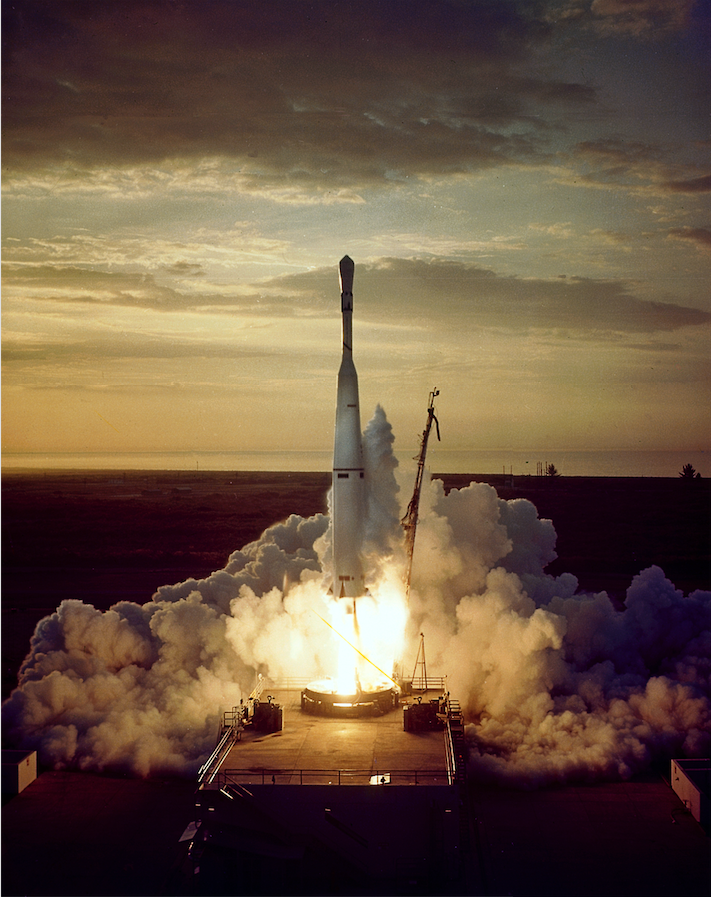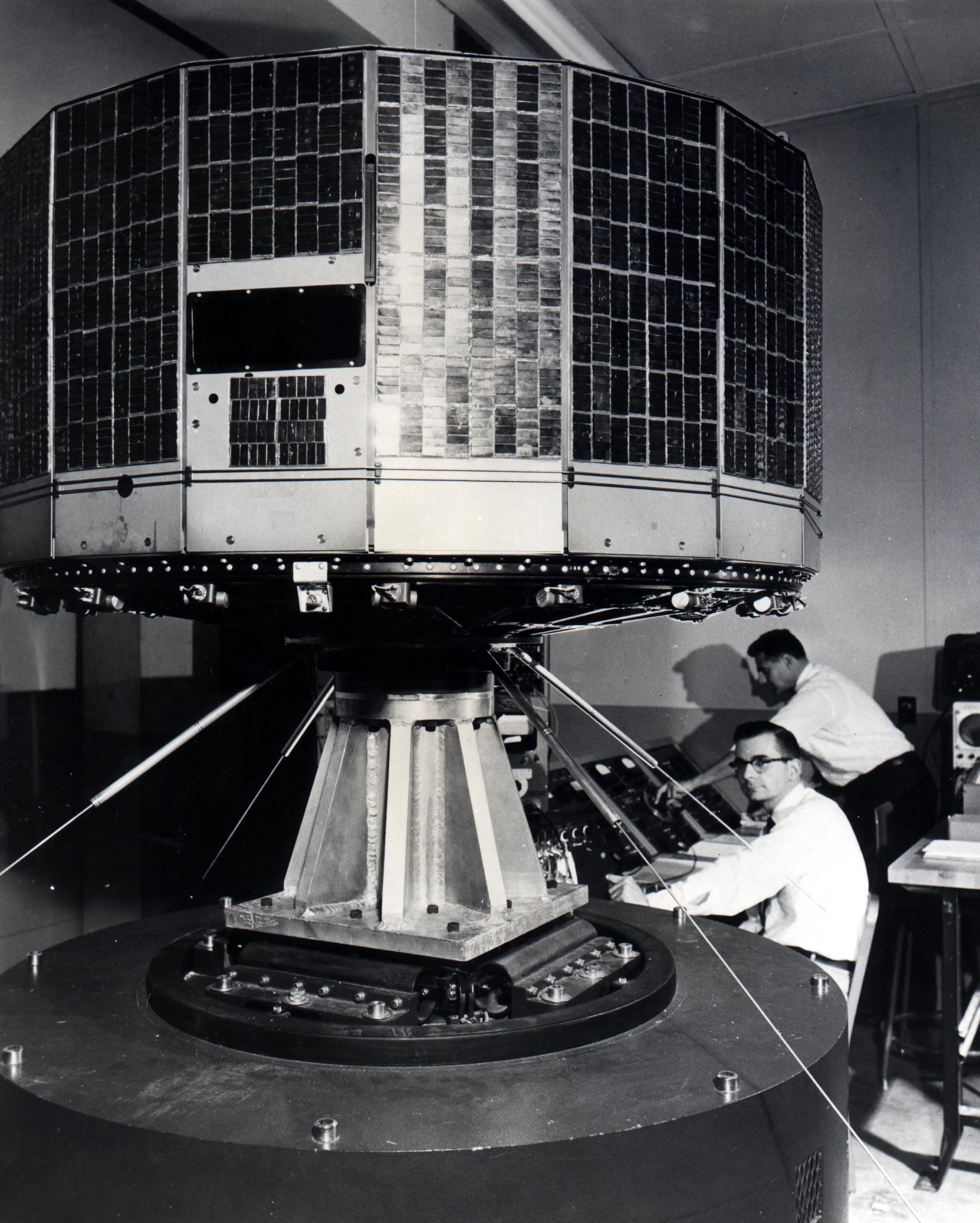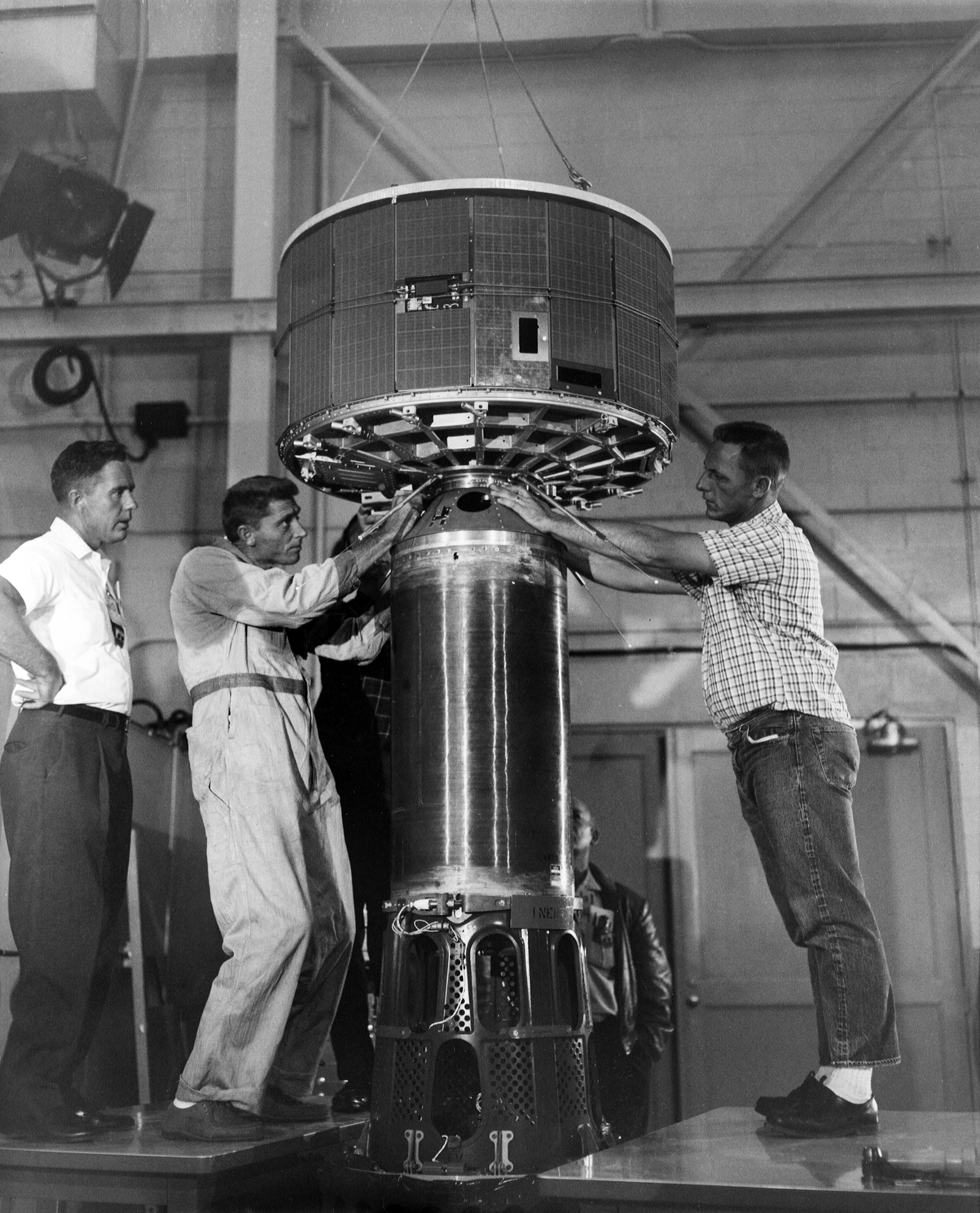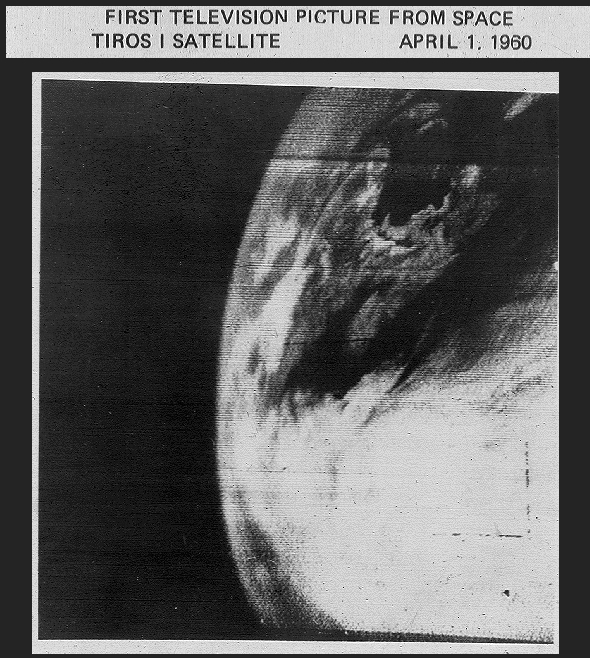
1 April 1960: TIROS-1, the first successful Earth-orbiting weather satellite, was launched at 6:40:09 a.m. (11:40:09 UTC), from Launch Complex 17A at the Cape Canaveral Air Force Station, Cape Canaveral, Florida, aboard a Thor-Able II liquid-fueled rocket. The satellite’s name is an acronym for Television Infra Red Observation Satellite.
The satellite was placed into a nearly-circular low Earth orbit with an apogee of 417.8 miles (672.4 kilometers) and perigee of 396.2 miles (637.6 kilometers). It is still in orbit and circles the Earth once every 1 hour, 37 minutes, 42 seconds. TIROS-1 remained operational for 78 days.

 TIROS-1 was built by the RCA Astro-Electronics Division at Princeton, New Jersey. It was constructed of of aluminum and stainless steel. It had a diameter of 3 feet, 6 inches (1.067 meters) and height of 1 foot, 7 inches (0.483 meters.) The satellite weighed 270 pounds (122.47 kilograms). Two television cameras were installed on the satellite. They received electrical power from storage batteries charged by 9,200 solar cells. Images were stored on magnetic tape, then transmitted when in range of a ground receiving station. The first image, which showed large-scale cloud formations, was transmitted the day of the launch.
TIROS-1 was built by the RCA Astro-Electronics Division at Princeton, New Jersey. It was constructed of of aluminum and stainless steel. It had a diameter of 3 feet, 6 inches (1.067 meters) and height of 1 foot, 7 inches (0.483 meters.) The satellite weighed 270 pounds (122.47 kilograms). Two television cameras were installed on the satellite. They received electrical power from storage batteries charged by 9,200 solar cells. Images were stored on magnetic tape, then transmitted when in range of a ground receiving station. The first image, which showed large-scale cloud formations, was transmitted the day of the launch.


The Able-II second stage was powered by an Aerojet AJ-10 engine which produced 7,800 pounds of thrust (34.696 kilonewtons). The propellant was a hypergolic combination of nitric acid and UDMH (hydrazine). It burned for 115 seconds.
There were sixteen Thor-Able two-stage rockets launched. TIROS-1 was placed in orbit by the last of that series.

© 2019, Bryan R. Swopes